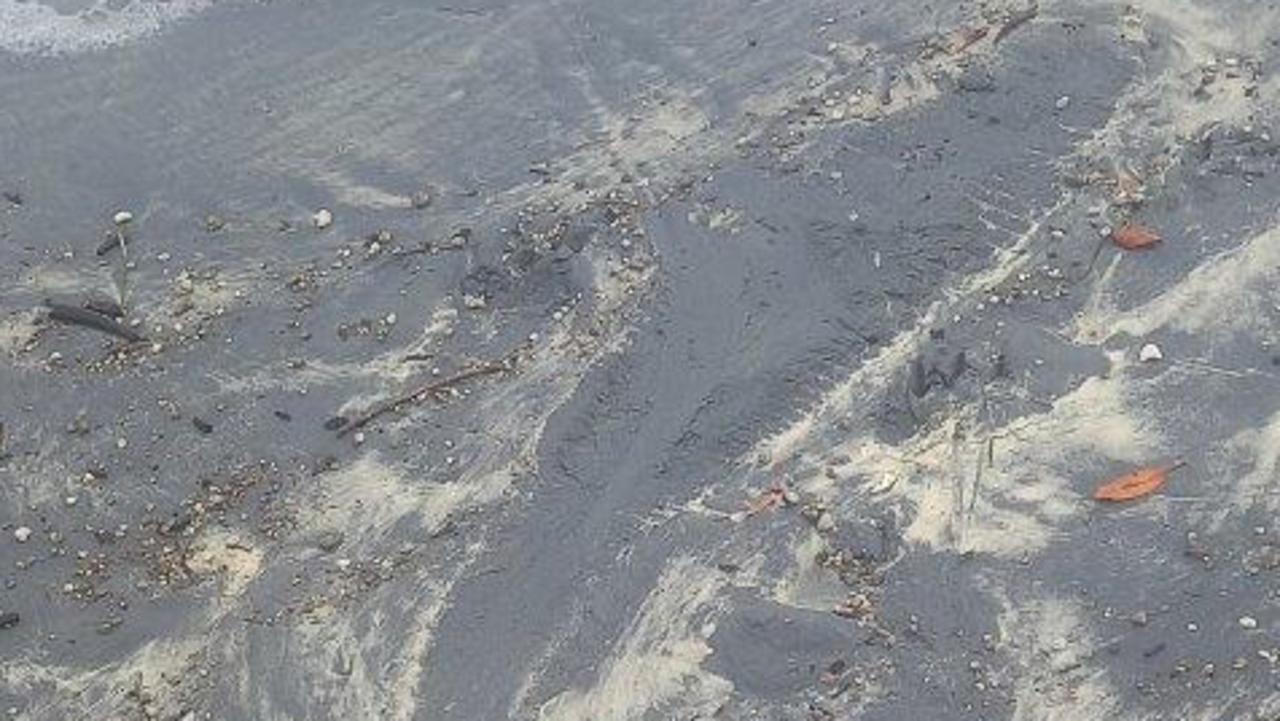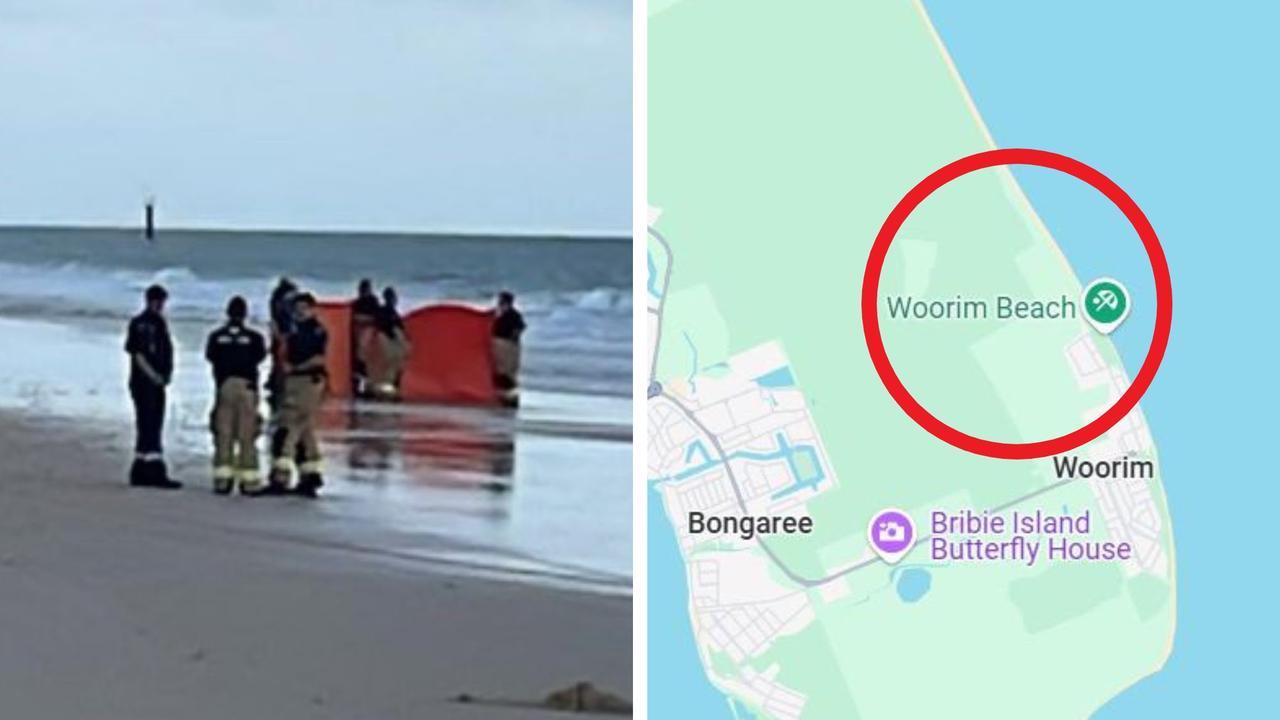‘Recipe for a national disaster’: Big problem could spread across Australia
A notorious pest which could cause up to six deaths per year if left unchecked in Queensland has spread across state borders.
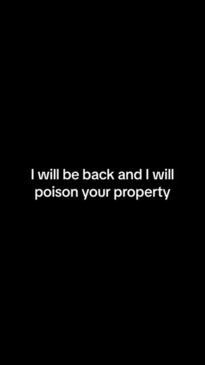
Animals
Don't miss out on the headlines from Animals. Followed categories will be added to My News.
A notorious pest which could cause up to six deaths per year and spark a “national disaster” has spread across state borders from Queensland to New South Wales, prompting urgent calls from experts.
Red important fire ants, an aggressive invasive species, were detected in northern NSW this month after travelling in turf delivered from Southeast Queensland.
The ants were reported by a landscaping contractor installing pallets of turf at a private property in Clunes, near Byron Bay, on Thursday, November 13.
The NSW Department of Primary Industries said the site would be treated to ensure that the area is free from ants, while the turf supplier and landscape contractor have been served individual biosecurity directions to stop the movement of lawn materials.
The National Fire Ant Eradication Program (NFAEP) – which aims to eradicate the pest from Australia by 2032 – and the Queensland-based lawn turf supplier are further investigating why the ants were detected despite appropriate documentation being supplied that certified the turf was treated before transport.
Fire ants, derived initially from South America, have been found at every capital city port in Australia, except Tasmania. They currently infest about 830,000 hectares in Southeast Queensland, close to the NSW border.
They were last discovered in NSW in Wardell in January this year before their nest was destroyed.
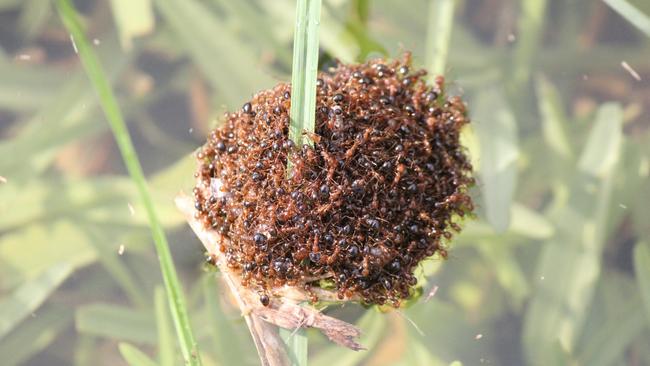
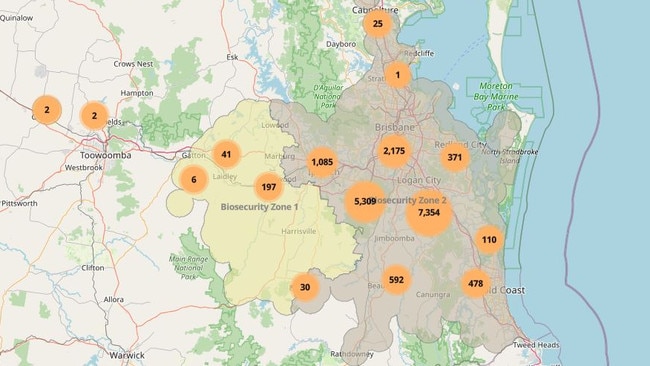
Invasive Species Council Advocacy Manager, Reece Pianta said the detection confirms major concerns about the increase in fire ants numbers within suppression zones in Queensland.
“NSW should be quite concerned about this latest fire ant interception,” Mr Pianta told news.com.au.
“Fortunately this last interception was still in the shipment, so it didn’t get into the ground, and there’s very little chance that it has spread. But it highlights how important containing fire ants in Southeast Queensland is because no matter how perfect the containment strategy is, fire ants will still breach and spread.”
If not contained, he said fire ants could potentially spread to the Murray–Darling Basin or other states and bring with it devastating impacts.
“Turf is an ideal carrying material for fire ants and we know there are very high nest densities in proximity to turf farms in Queensland that need to be dealt with as part of the fire ant eradication and suppression effort by the government,” he explained.
“It’s a recipe for a national fire ant disaster.”

Mr Pianta said the pests should be taken seriously, as they’re “a real ecosystem disrupter”.
“They can cause harm and displace native species, and cause the loss of agricultural output.”
They can also can also, in extreme situations, kill humans and pets.
“They have an aggressive stinging response. So when their nests are disturbed, whether it’s a human, a pet or wildlife, the fire ants will swarm, and they’ll essentially attack in unison, using their bite and sting response to inject venom into their target multiple times.
In some cases, it can cause secondary infections or anaphylaxis, leading to death.
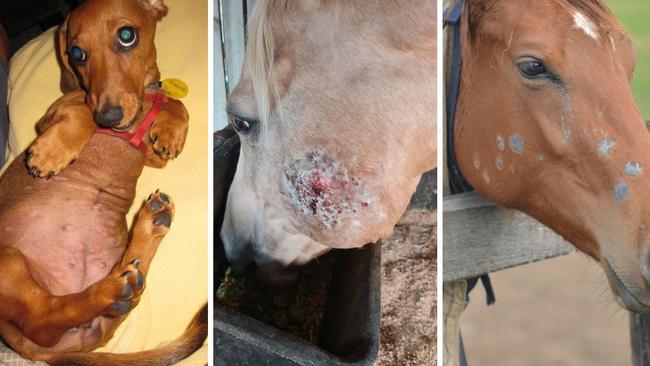
As someone who was stung himself earlier this year, Mr Pianta described the pain as “dozens of little paper cuts repeatedly,” adding “it stings for days or weeks after the event.”
Fortunately, there have been no deaths from fire ants yet in Australia, however, over 85 people have been killed by the pest in the US.
“We know what we’re in for if fire ants get out of control because we’re seeing it in America. About a third of their country is suitable fire ant habitat. But in Australia, the modelling shows over 98 per cent of Australia is suitable for fire ants. So if they get out of control, this will be a problem for the whole country.”
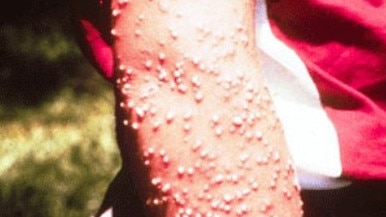
Potential for six deaths per year
A worrying report by the The Australia Institute (TAI), found fire ants could be responsible for six deaths every year, across Queensland if allowed to continue spreading.
The report analysed average Australian medical and veterinary costs, the average cost of pesticides and pest controls spent by each household and prior reports developed by Biosecurity Queensland in determining their results.
Each electorate will need to spend an average of more than $2m every year to control fire ants, along with additional costs for medical services and veterinary visits should pets get bitten.
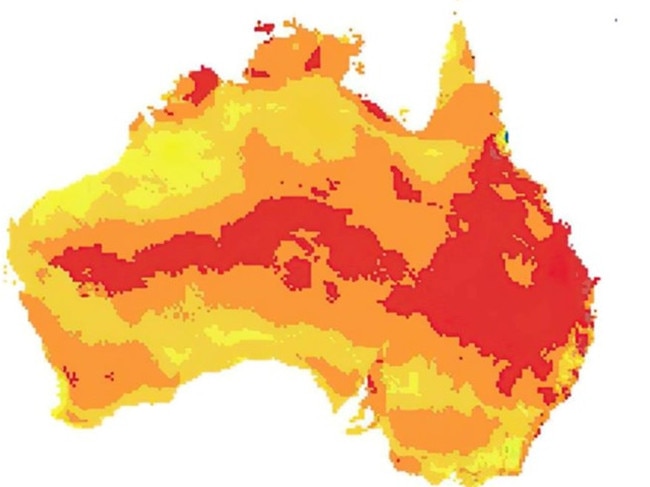
The report found the resulting medical costs would balloon to $47.35m and cost households $121.4m in eradication costs.
“While fire ants pose a risk to all of Australia, Queensland faces the most immediate and significant danger,” it concluded.
“Modelling shows that red imported fire ants could spread as far as Far North Queensland by 2035 unless funding for existing eradication programs is increased.”
“Wake-up call” for governments
Mr Pianta said the recent incursion serves as “stark reminder” to the newly instated Queensland liberal government that fire ant eradication must be a first 100-day priority.
“While the eradication program is rolling out its work, we want to see a strengthened program of auditing and compliance and support for high risk industries like the turf industry, to limit the accidental spread of fire ants outside the infestation zone”
“The interception of fire ants in the turf at Clunes has to be a wake-up call for Australia’s governments that fire ants are a very serious problem, and that more resources are needed to make sure that we’re on track with eradication.”
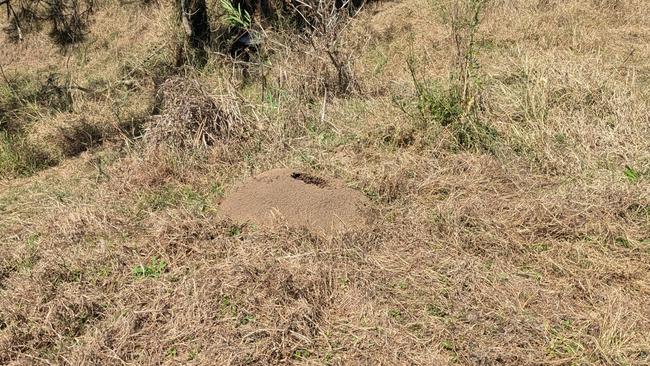
Nationals Leader David Littleproud has also condemned the Queensland Labor government’s response to a Senate inquiry report on red imported fire ants.
“The latest discovery of fire ants in northern New South Wales is unfortunately a legacy of the former Queensland Labor Government,” Mr Littleproud said in a statement.
“Federal Labor spent more than six months before releasing its response, waiting until the Queensland state election was over.
“Critically, the first recommendation was that the Australian Government review the current level of funding with the state governments.
“This never happened and in the meantime the Queensland Labor Government was too focused on its closing down sale, with former Premier Steven Miles more worried about being re-elected than eradicating fire ants.
Minister for Primary Industries Tony Perrett told news.com.au fire ants spread “beyond containment lines, marching across our state virtually unchecked” under the previous Labor government.
“I have sought an urgent briefing on the Fire Ant eradication program to understand how far the spread has occurred and what needs to be done to bolster the effectiveness of the eradication program,” he said.
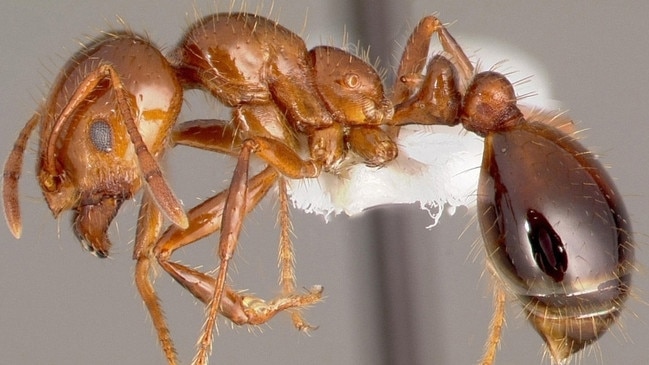
Anger over ‘toxic’ fire ant bait
Eradication attempts in Queensland are currently facing a difficult step as landholders – concerned about the ant bait being “toxic” and fearing its impacts on the ecosystem and their livestock – face off with government eradicators.
The National Fire Ant Eradication Program (NFAEP) uses two types of granular treatment to deal with fire ants: one involving insect growth regulator, the other a fast-acting insecticide.
Insect growth regulator (IGR) treatment contains 5g per kilogram of pyriproxyfen or S-methoprene – a common ingredient in most household pesticides that mimics a natural hormone in insects to stop their growth.
The insecticide contains either indoxacarb or a combination of hydramethylnon and pyriproxyfen – usually found in cockroach baits or dog flea collars.
Both these treatments use small pieces of corn grit soaked in soybean oil that are foraged and circulated by ants to kill the colony.
Some landowners claim the baits endanger their livestock and health in an “excessive, mass poisoning” of areas.
Trevor Hold, a landowner in Queensland’s Lockyer Valley region and fierce campaigner against the treatment program, said the chemicals being used were known to have negative impacts on non-targeted species.
He claimed cows on his property had died as a result of poisoning, which he attributed to the use of pyriproxyfen and s-methoprene.
“(They) can impact embryos and foetus development of calves,” Mr Hold said.
“This creates more miscarriages in cows and if the calf does make it to full term, they die prematurely from toxic liver poisoning and cognitive decline over a six-week period.”
Mr Hold said he wanted to see a different approach, including the use of hot water injections directly into ant colonies.
The process has been backed by biologist Joshua King – a professor at the University of Central Florida – who has derided the use of the bait in Queensland.
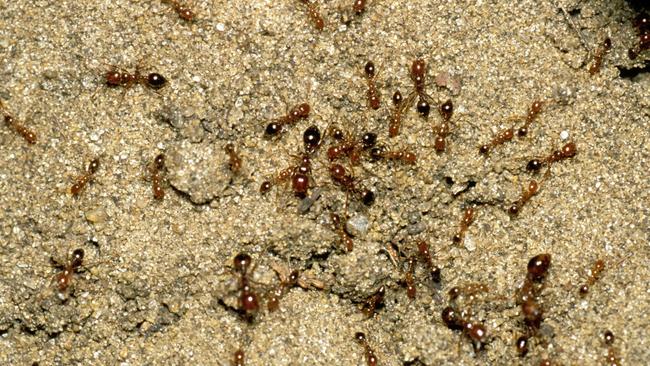
In an open letter, he said the current approach was “not sustainable, excessively costly” and risked hastening the spread of fire ants.
But the NFAEP said the use of the granular treatments was considered safe by Australia’s pesticides and veterinary medicine authority, along with the Therapeutic Goods Administration (TGA).
“There is no evidence that fire ant treatment has resulted in the poisoning or death of any vertebrate species,” a NFAEP spokeswoman said.
The spokeswoman said the use of hot water treatments was not considered a successful approach to controlling the whole nest or treating large land areas.
“Our current eradication approach is proven,” the spokeswoman continued.
“Australia is the only country actively working to eradicate fire ants. Other countries, including the United States, are focused on suppression and/or containment, and using different strategies.”
Aussies can play their part
While the government is responsible for the NFAEP, Mr Pianta said fire ants are a national issue, and all Aussies should do their part.
“Ultimately, this is a problem for the whole country,” he stressed.
“We all need to be checking our properties, keeping an eye out for and reporting fire ant nests when we find them. And if you live in a fire ant zone, there is a government free bait program you can access to treat your property, so we need people to participate in that … we can all play our part.”
– With NCA NewsWire
Originally published as ‘Recipe for a national disaster’: Big problem could spread across Australia




